Abstract
The gram-negative organism causing abortion in dogs was examined in parallel with cultures representative of the Brucella species and with Bordetella bronchiseptica. The organism fits into the genus Brucella and most closely resembles B. suis on the basis of its growth characteristics. It is of rough colonial morphology and is agglutinated by antisera prepared against rough Brucella. In mouse toxicity tests, no endotoxic activity could be demonstrated. In contrast to most Brucella cultures, it does not utilize erythritol. Electron microscopy showed a cell wall structure similar to that of other gram-negative organisms. The question of whether the organism should be designated Brucella canis, as proposed by Carmichael and Bruner, or Brucella suis biotype 5 is discussed. The authors favor the designation Brucella canis because the organism lacks the lipopolysaccharide antigen associated with the smooth agglutinogen and endotoxin, and it does not utilize erythritol.
Full text
PDF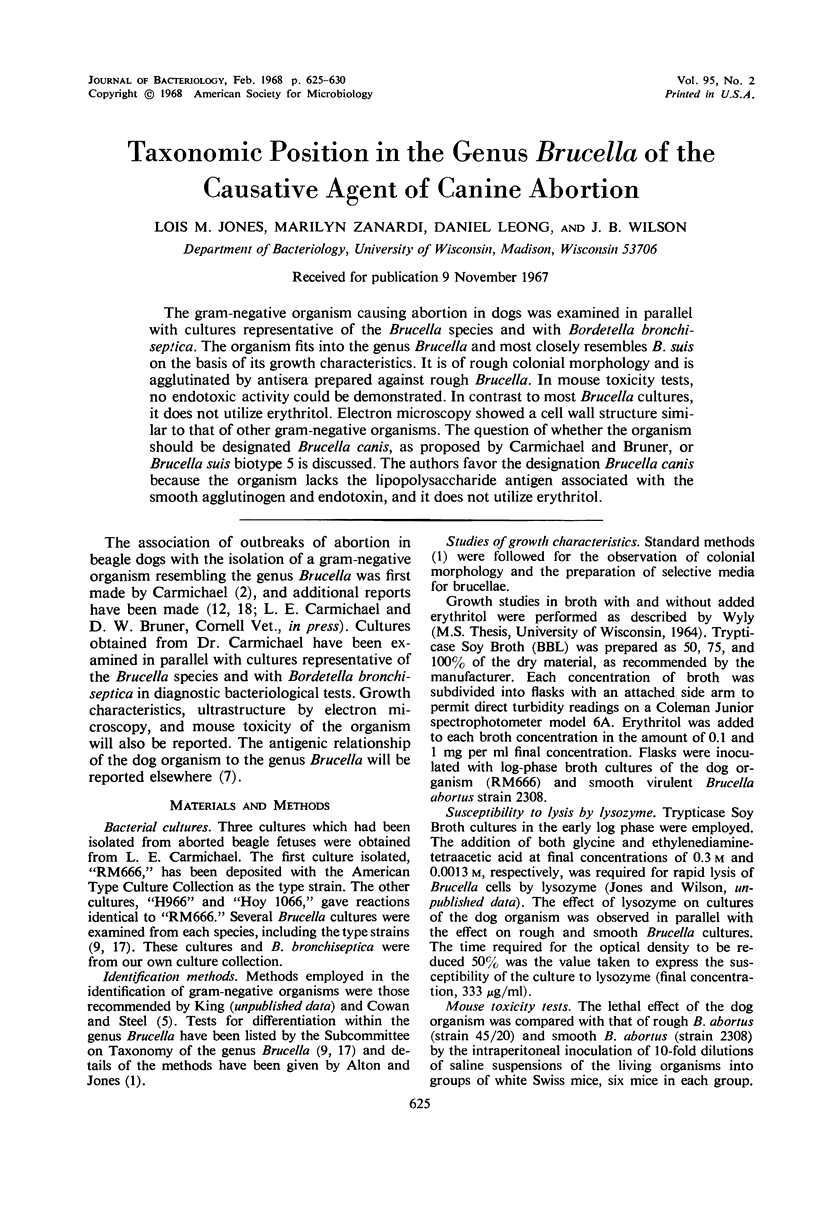
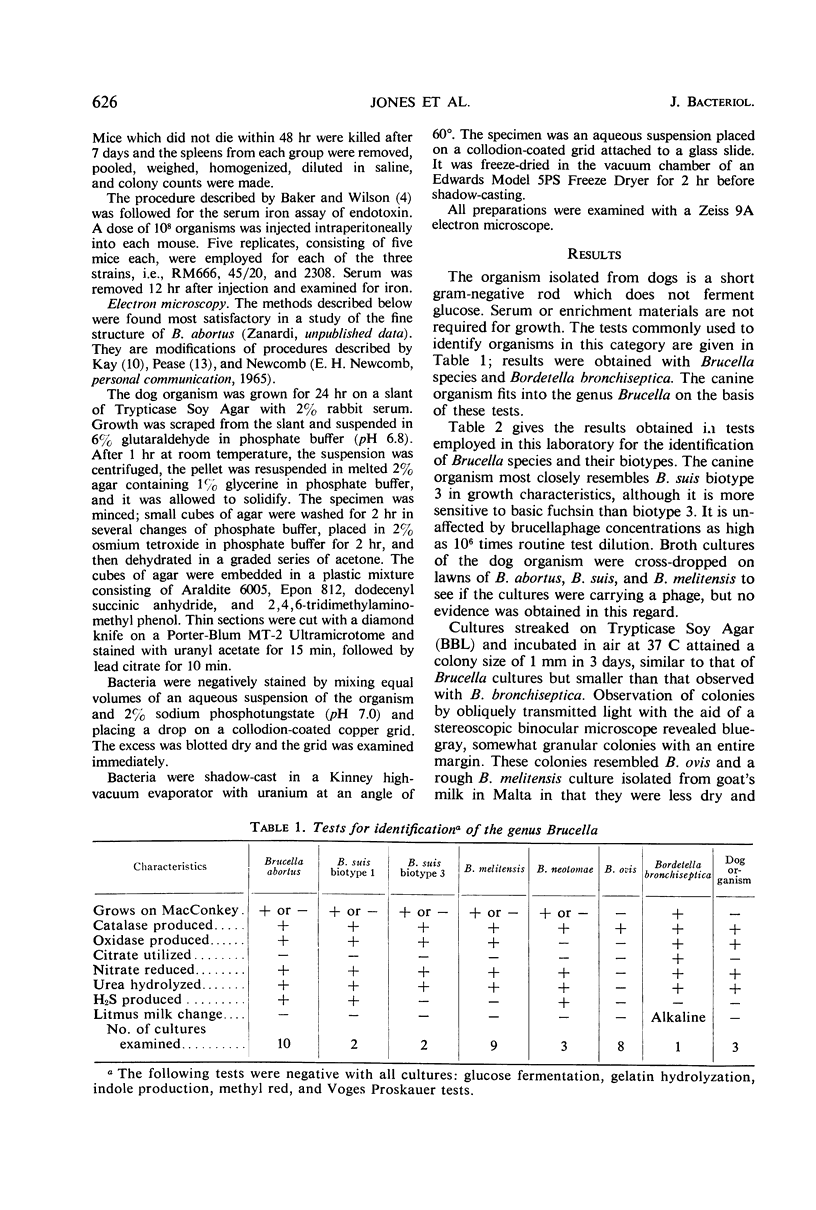
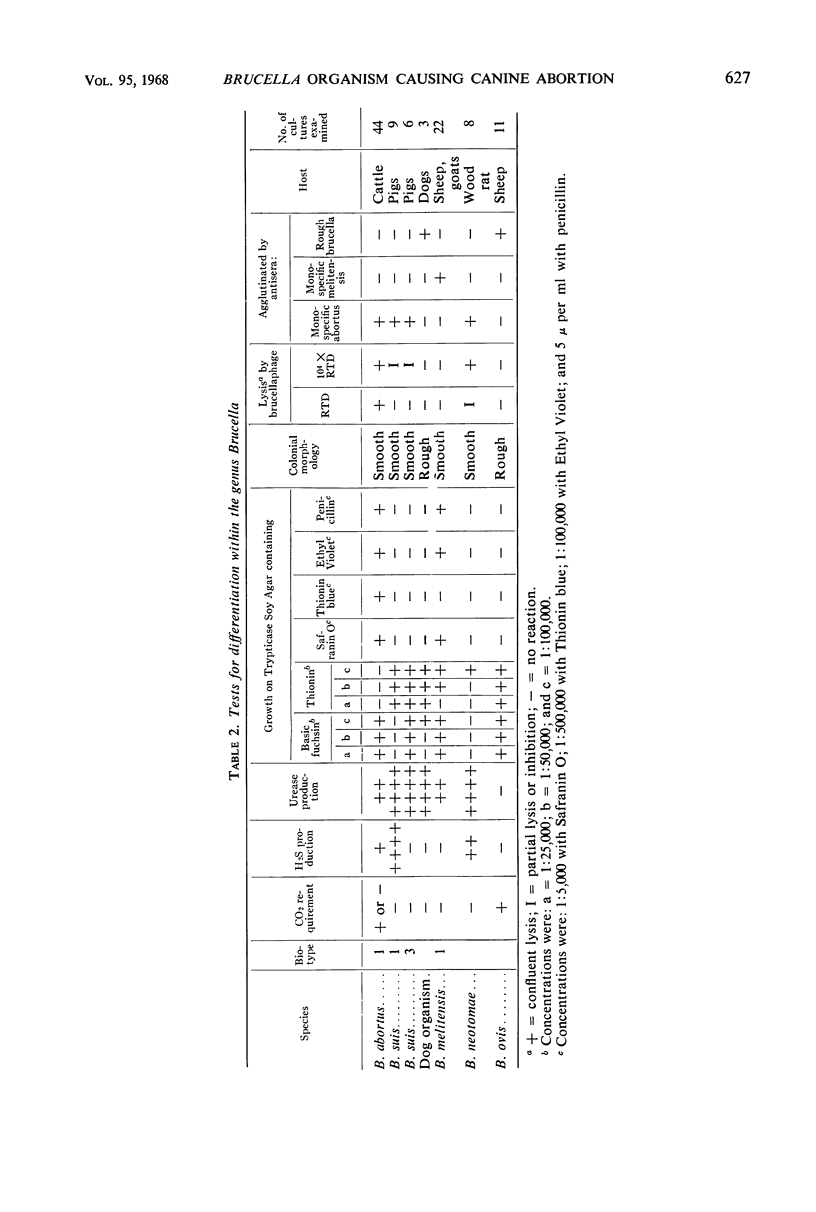
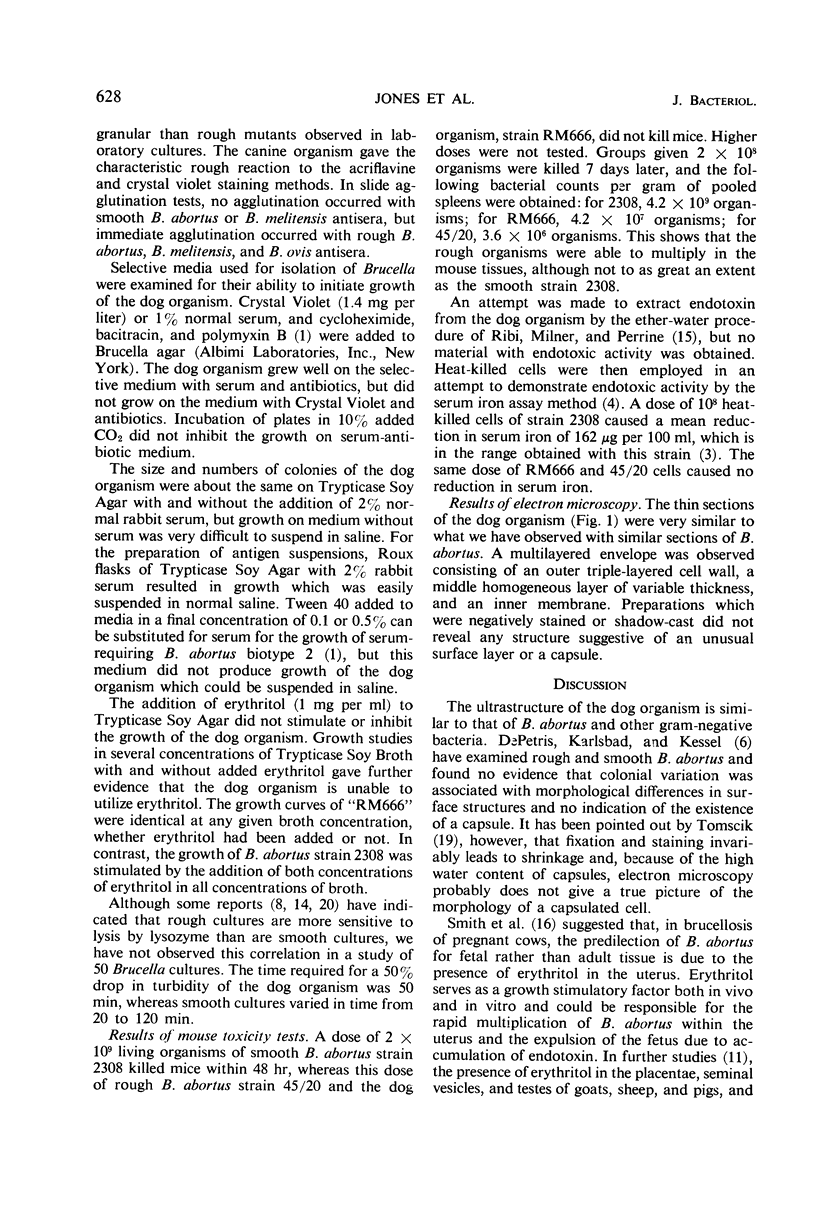
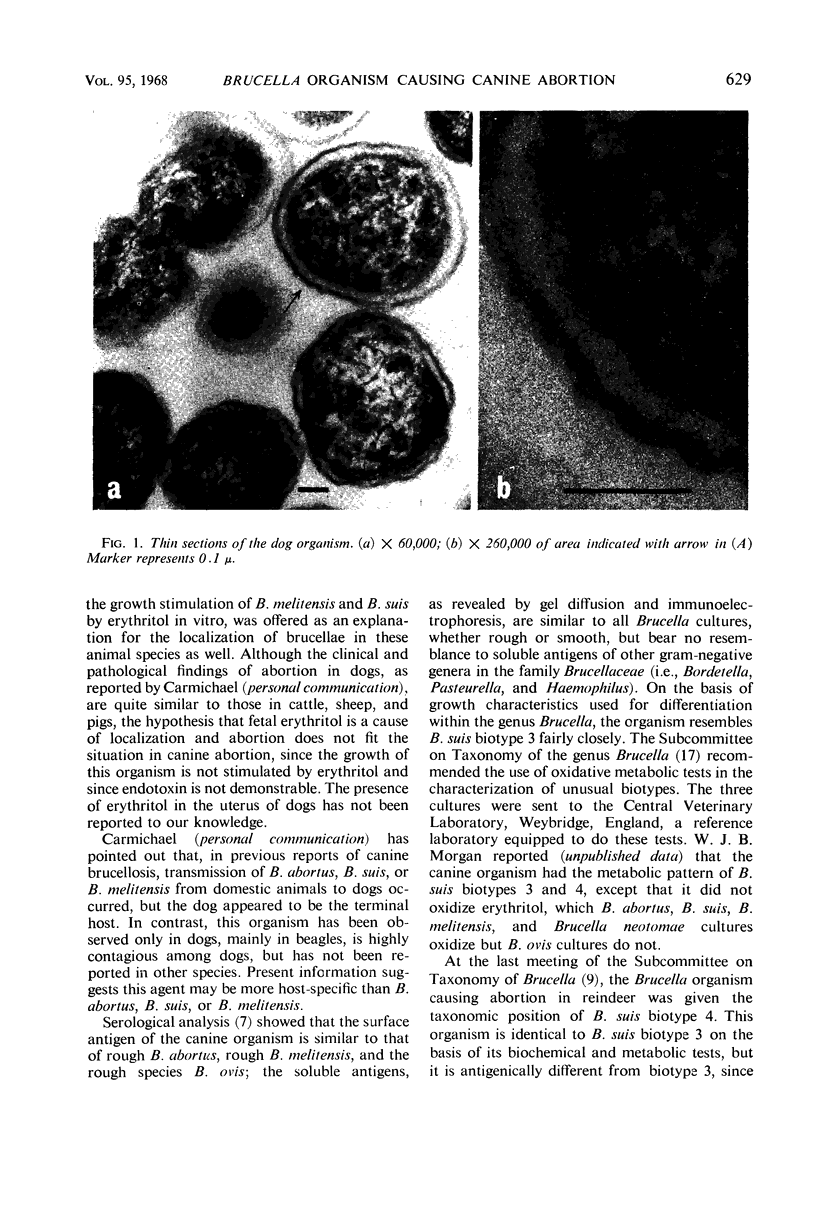
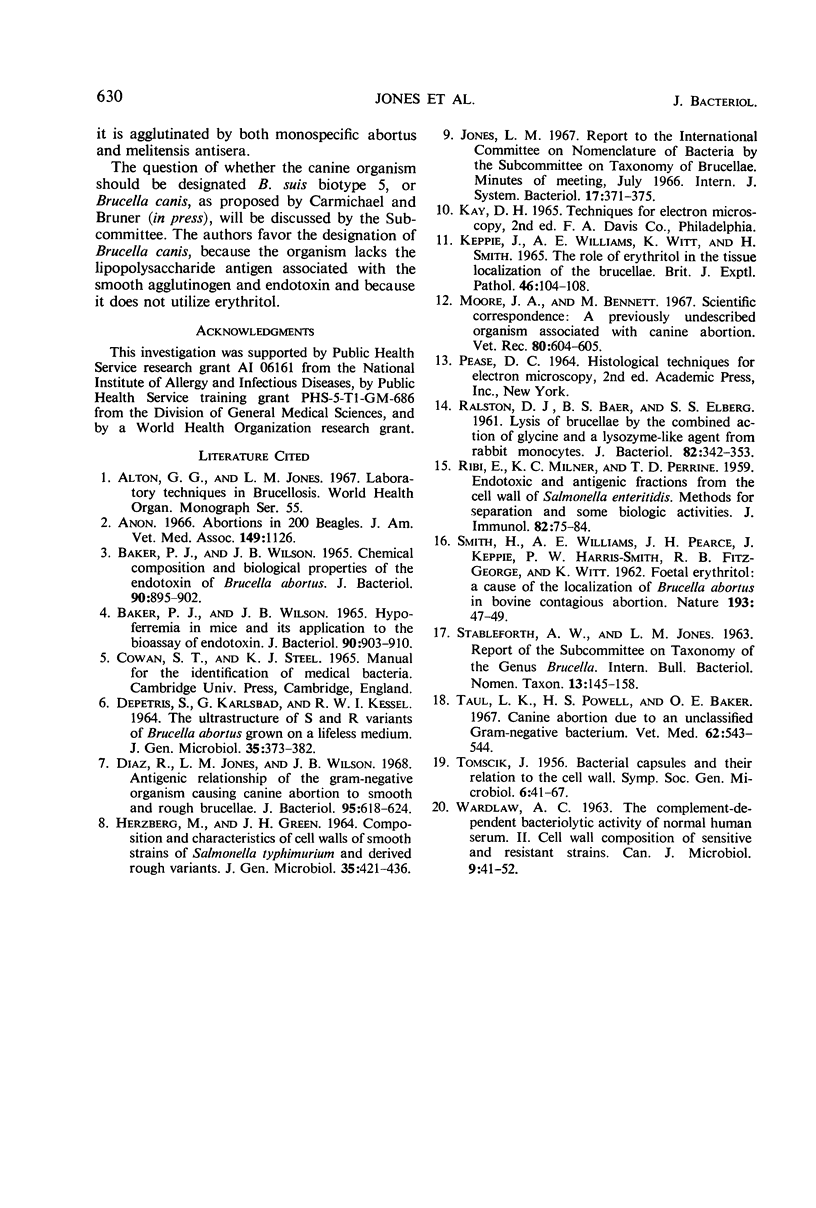
Images in this article
Selected References
These references are in PubMed. This may not be the complete list of references from this article.
- Baker P. J., Wilson J. B. Chemical composition and biological properties of the endotoxin of Brucella abortus. J Bacteriol. 1965 Oct;90(4):895–902. doi: 10.1128/jb.90.4.895-902.1965. [DOI] [PMC free article] [PubMed] [Google Scholar]
- Baker P. J., Wilson J. B. Hypoferremia in mice and its application to the bioassay of endotoxin. J Bacteriol. 1965 Oct;90(4):903–910. doi: 10.1128/jb.90.4.903-910.1965. [DOI] [PMC free article] [PubMed] [Google Scholar]
- DE PETRIS S., KARLSBAD G., KESSEL R. W. THE ULTRASTRUCTURE OF S AND R VARIANTS OF BRUCELLA ABORTUS GROWN ON A LIFELESS MEDIUM. J Gen Microbiol. 1964 Jun;35:373–382. doi: 10.1099/00221287-35-3-373. [DOI] [PubMed] [Google Scholar]
- Diaz R., Jones L. M., Wilson J. B. Antigenic relationship of the gram-negative organism causing canine abortion to smooth and rough brucellae. J Bacteriol. 1968 Feb;95(2):618–624. doi: 10.1128/jb.95.2.618-624.1968. [DOI] [PMC free article] [PubMed] [Google Scholar]
- HERZBERG M., GREEN J. H. COMPOSITION AND CHARACTERISTICS OF CELL WALLS OF SMOOTH STRAINS OF SALMONELLA TYPHIMURIUM AND DERIVED ROUGH VARIANTS. J Gen Microbiol. 1964 Jun;35:421–436. doi: 10.1099/00221287-35-3-421. [DOI] [PubMed] [Google Scholar]
- KEPPIE J., WILLIAMS A. E., WITT K., SMITH H. THE ROLE OF ERYTHRITOL IN THE TISSUE LOCALIZATION OF THE BRUCELLAE. Br J Exp Pathol. 1965 Feb;46:104–108. [PMC free article] [PubMed] [Google Scholar]
- Moore J. A., Bennett M. A previously undescribed organism associated with canine abortion. Vet Rec. 1967 May 20;80(20):604–605. doi: 10.1136/vr.80.20.604. [DOI] [PubMed] [Google Scholar]
- RALSTON D. J., BAER B. S., ELBERG S. S. Lysis of brucellae by the combined action of glycine and a lysozyme-like agent from rabbit monocytes. J Bacteriol. 1961 Sep;82:342–353. doi: 10.1128/jb.82.3.342-353.1961. [DOI] [PMC free article] [PubMed] [Google Scholar]
- RIBI E., MILNER K. C., PERRINE T. D. Endotoxic and antigenic fractions from the cell wall of Salmonella enteritidis; methods for separation and some biologic activities. J Immunol. 1959 Jan;82(1):75–84. [PubMed] [Google Scholar]
- SMITH H., WILLIAMS A. E., PEARCE J. H., KEPPIE J., HARRIS-SMITH P. W., FITZ-GEORGE R. B., WITT K. Foetal erythritol: a cause of the localization of Brucella abortus in bovine contagious abortion. Nature. 1962 Jan 6;193:47–49. doi: 10.1038/193047a0. [DOI] [PubMed] [Google Scholar]
- Taul L. K., Powell H. S., Baker O. E. Canine abortion due to an unclassified gram-negative bacterium. Vet Med Small Anim Clin. 1967 Jun;62(6):543–544. [PubMed] [Google Scholar]



